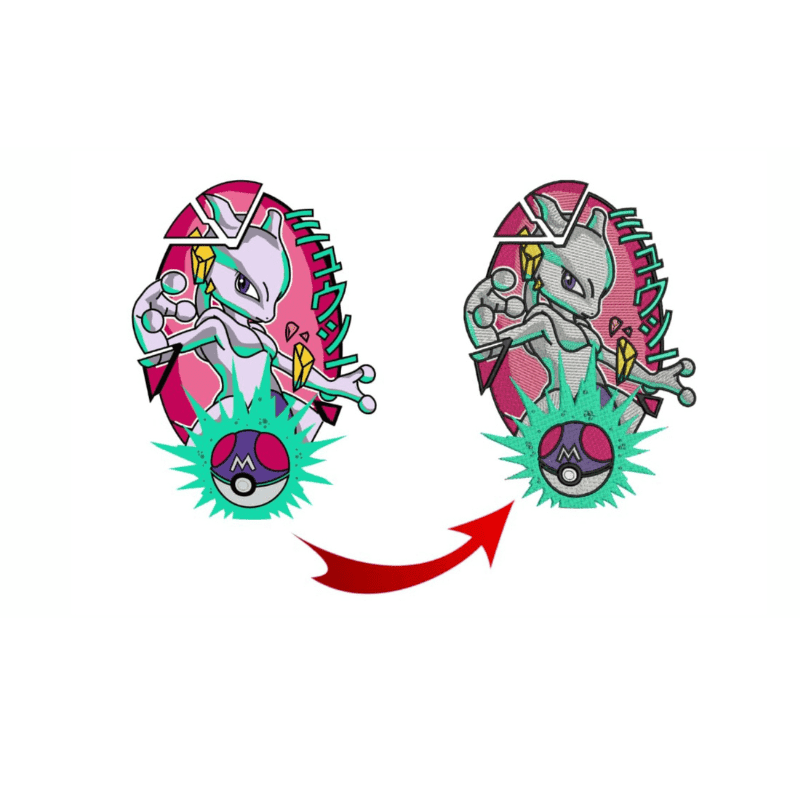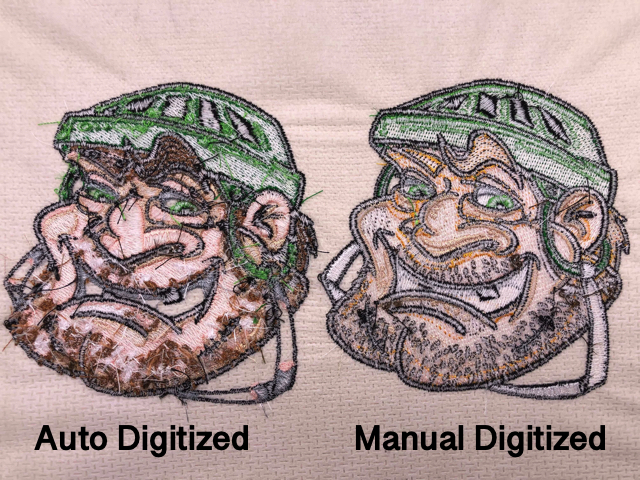Effective Digitizing for Embroidery: Quick Turnaround
Effective Digitizing for Embroidery: Quick Turnaround
Blog Article
Understanding the Embroidery Digitizing Refine: Your Ultimate Overview
Needlework digitizing is a precise craft that calls for accuracy and expertise to equate detailed designs into electronic layouts for device needlework. As craftsmens start this trip to master the embroidery digitizing procedure, a thorough understanding of the basics sets the structure for quality. Nonetheless, beyond the simple expertise lies a realm of innovative software, specialized tools, and nuanced methods waiting to be checked out. By delving into the nuances of digitizing, one can unlock a world of innovative opportunities and boost their needlework projects to new heights.

Recognizing Needlework Digitizing Essentials
Embroidery digitizing fundamentals develop the structure upon which elaborate styles are equated right into machine-readable styles for exact sewing. This preliminary action in the needlework digitizing procedure is essential for guaranteeing that the last stitched product is a loyal depiction of the initial style. Comprehending embroidery digitizing fundamentals involves understanding essential concepts such as stitch types, stitch instructions, thickness, rug, and draw payment.
Stitch types play a vital role in establishing the aesthetic and textural end result of the stitched style. By choosing the ideal stitch kind, whether it be satin, fill, or running stitch, digitizers can accomplish the preferred effect and enhance the total top quality of the needlework. Furthermore, stitch instructions affects the flow and dimension of the layout, while thickness figures out the spacing and protection of the stitches.
Furthermore, rug stitching gives security to the design by securing the textile and stopping distortion during the embroidery procedure. Draw payment is another important consideration to neutralize the natural tendency of textile to contract when stitched. Mastering these needlework digitizing basics is basic for creating professional-quality stitched items.
Picking the Right Digitizing Software
Choosing the appropriate digitizing software application is a critical decision that substantially impacts the effectiveness and high quality of the needlework digitizing process. Digitizing for Embroidery. When choosing the appropriate digitizing software application, it is important to consider aspects such as the intricacy of layouts you intend to create, the user-friendliness of the software, the level of customer support provided, and the compatibility with your embroidery maker
There are numerous digitizing software program alternatives readily available on the market, varying from fundamental programs for novices to innovative software program for specialist digitizers. Some preferred selections consist of Wilcom EmbroideryStudio, Hatch Needlework Software Application, and PulseID. These software application packages offer a large range of tools and functions to help you produce elaborate designs with convenience.
Prior to choosing, it is suggested to discover the various software program choices with totally free trials or demos to identify which one finest fits your needs. Additionally, reviewing testimonials and seeking recommendations from experienced digitizers can provide beneficial understandings into the strengths and weak points of each software application bundle (Digitizing for Embroidery). By carefully evaluating your needs and comparing the features of various digitizing software application, you can make an educated option that boosts your needlework Read More Here digitizing process
Digitizing Devices and Strategies

Optimizing Layout Setup for Needlework
Understanding the complexities of design settings is basic in accomplishing optimum results in the needlework digitizing process, building upon the structure laid by comprehending digitizing devices and methods. When maximizing style setups for embroidery, it is crucial to consider variables such as stitch type, density, padding, pull payment, and enrollment. Enrollment setups align different elements of the design precisely, maintaining general layout integrity.

Troubleshooting Common Digitizing Issues
When coming across common digitizing concerns during the needlework process, it is necessary to understand the origin triggers and apply effective remedies promptly. One published here typical trouble is stitch density problems, where stitches might be too thick, creating the fabric to pucker, or also sparse, causing voids in the design. Changing the stitch thickness setups in the digitizing software can assist settle this issue.
One more regular obstacle is thread breaks during the embroidery procedure. This can take place because of different factors such as wrong stress settings, plain needles, or utilizing low-quality thread. Guaranteeing appropriate upkeep of the needlework machine, including routine needle adjustments and tension adjustments, can reduce the incident of thread breaks.
Additionally, layout enrollment mistakes can result in misaligned aspects within the embroidery style. Inspecting the style positioning in the digitizing software program and making essential changes prior to sewing can assist in preventing this problem. By attending to these usual digitizing concerns without delay and properly, you can ensure a smoother needlework procedure and great site high-quality ended up products.
Conclusion
In conclusion, understanding the needlework digitizing procedure calls for a strong understanding of the essentials, the appropriate selection of software program, and expertise of devices and strategies. Enhancing style settings and fixing common digitizing issues are critical actions in making certain top notch needlework results. By adhering to these actions carefully, one can accomplish precision and efficiency in the digitizing procedure.
Report this page